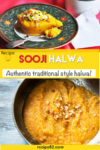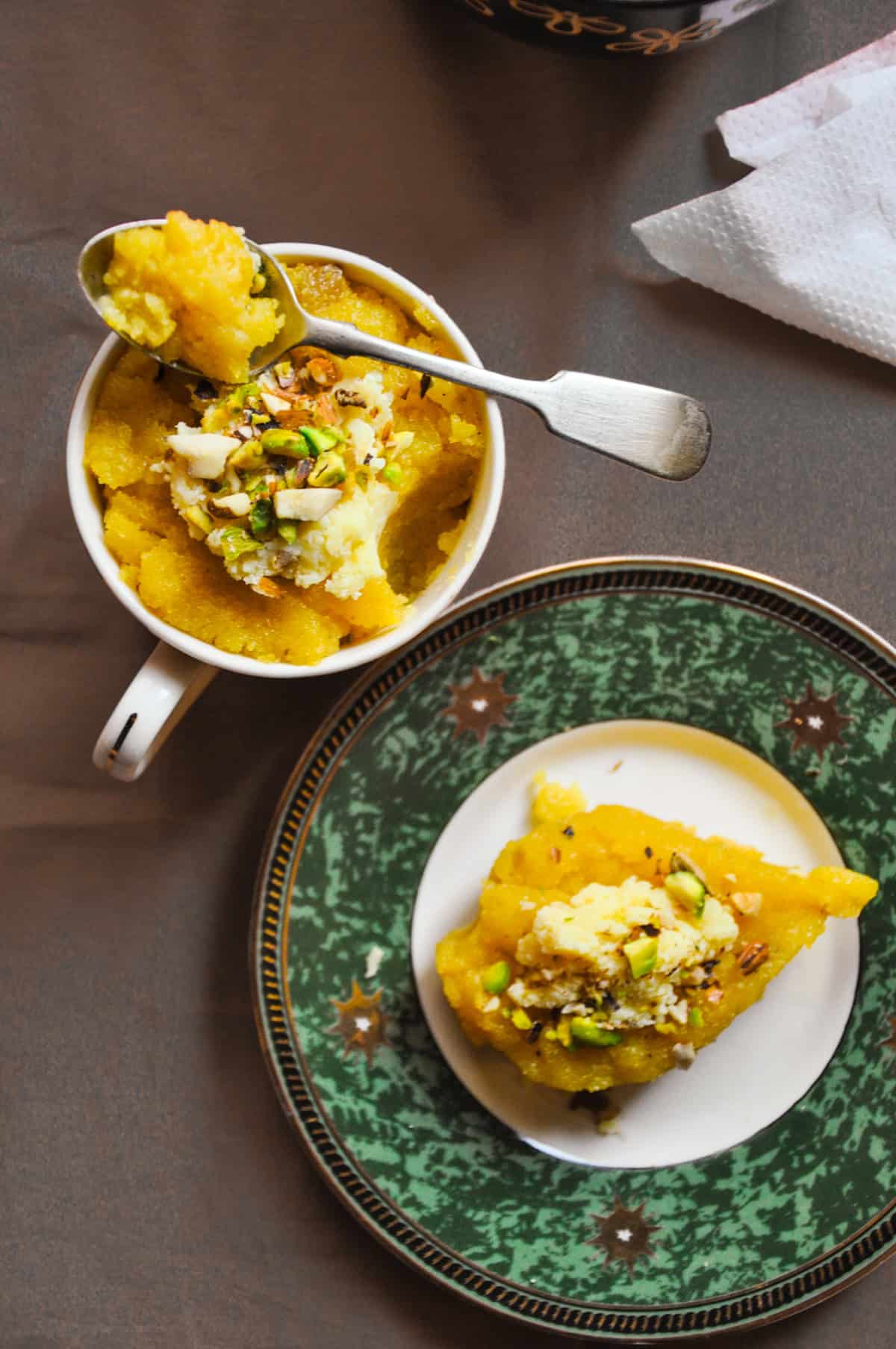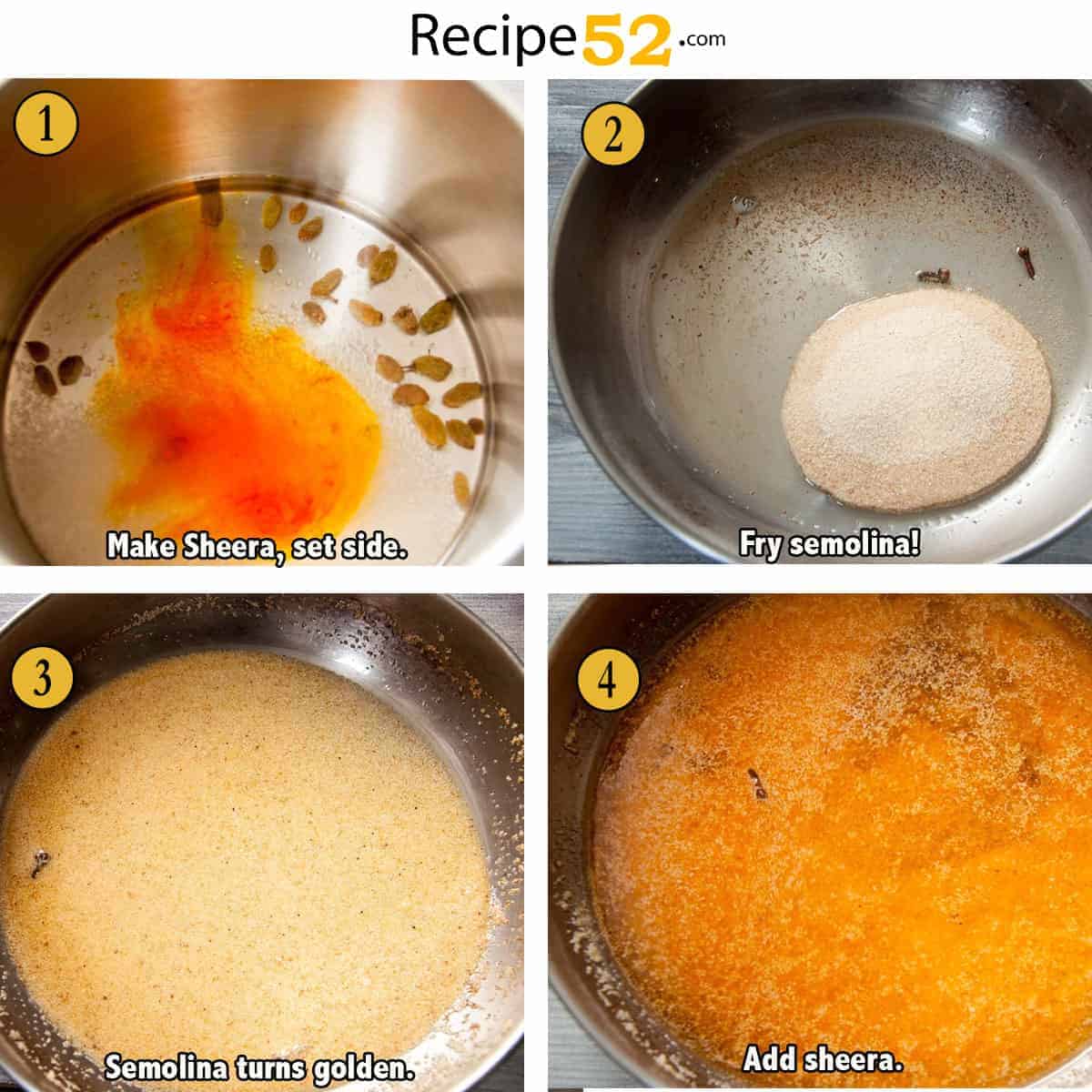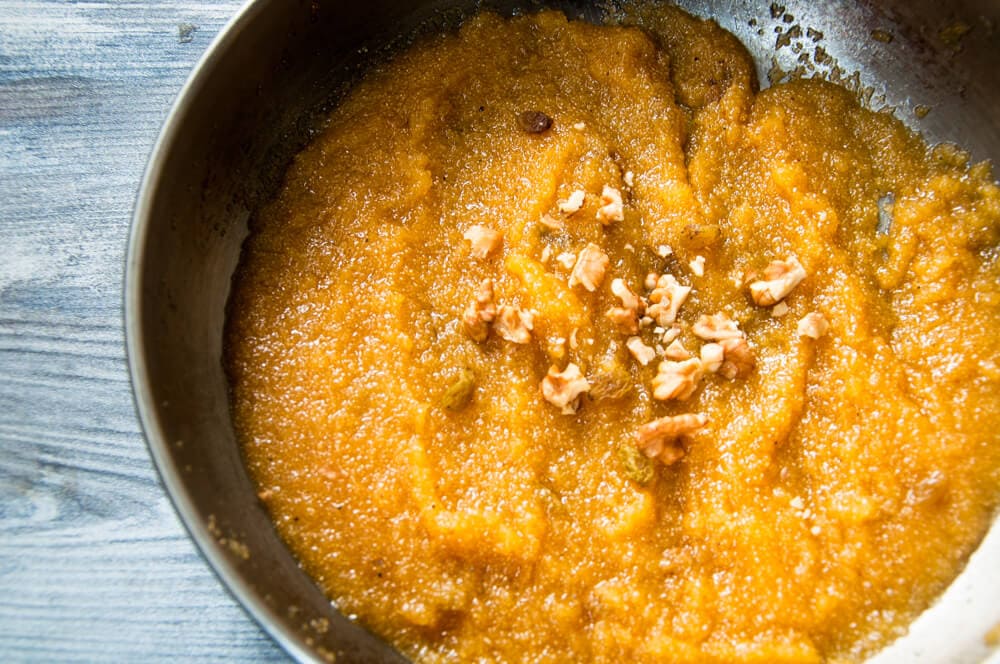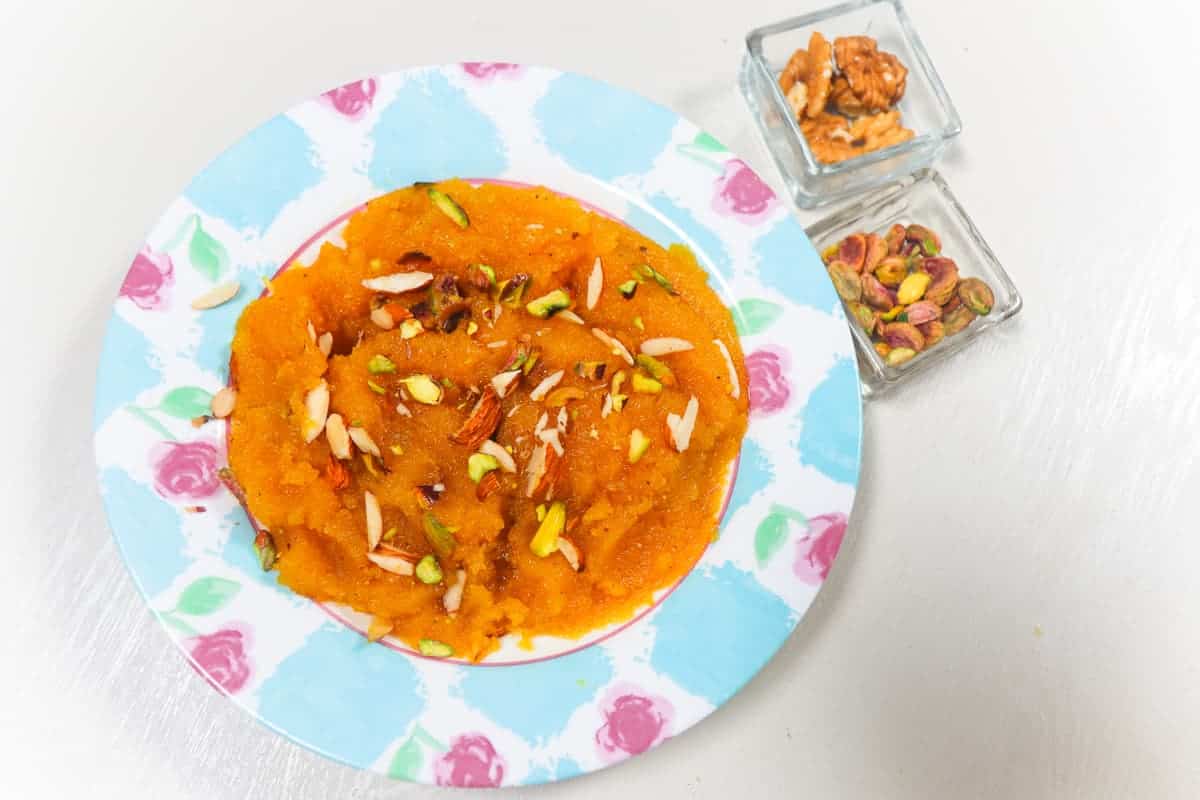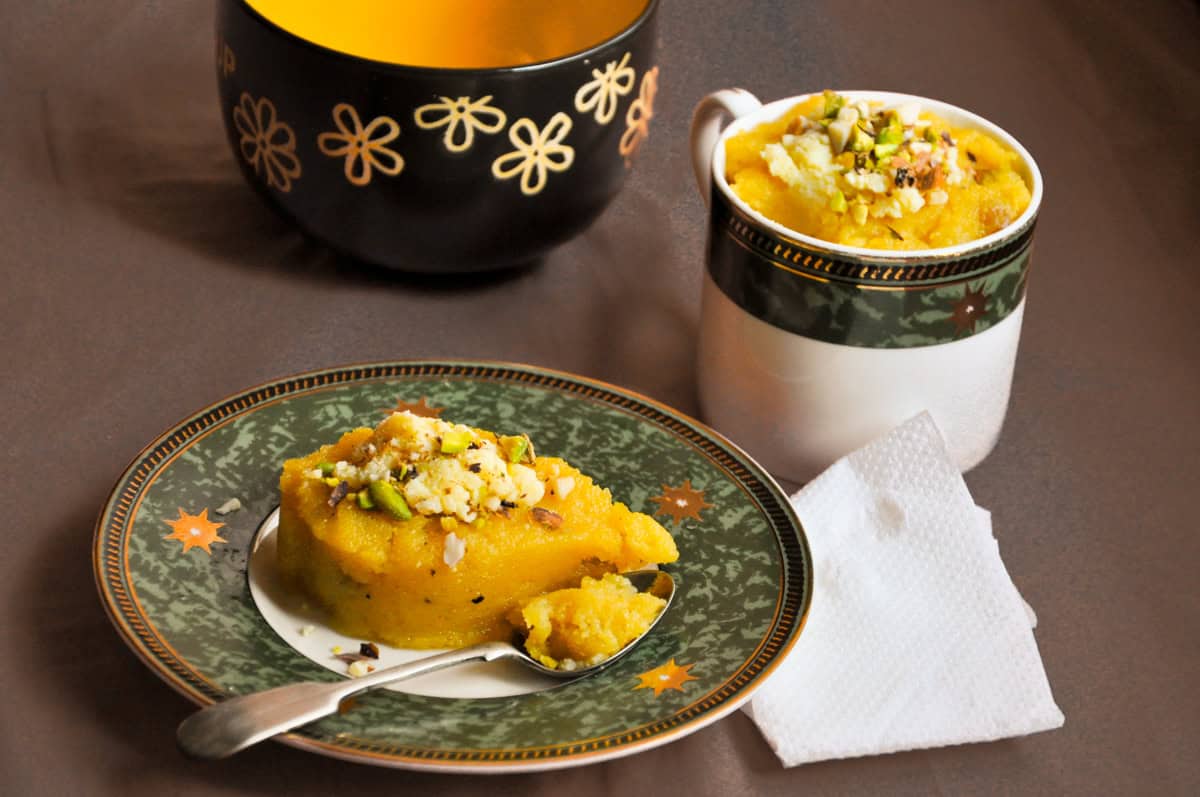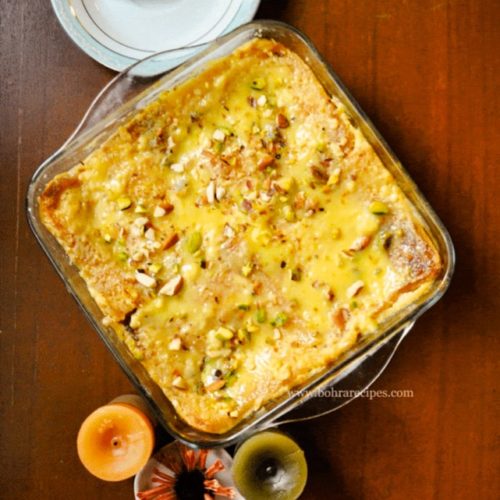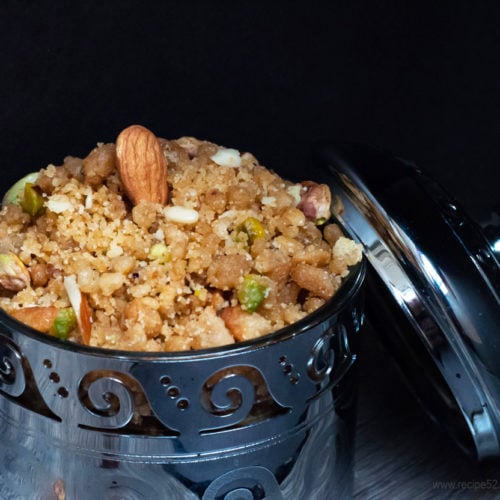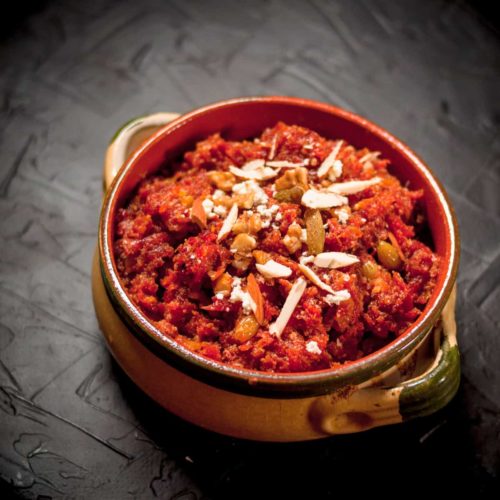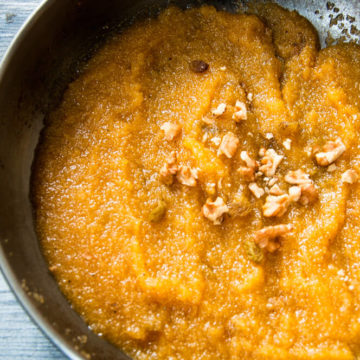Punjabi halwa poori is just to Pakistanis what donuts are to Americans; a yummy, happy start to the weekend. My kids just love it and having it on the weekend is a ritual for us. Like carrot halwa, sheer khurma, and shahi tukray; sooji halwa is widely eaten throughout South Asia.
Why this is the best recipe?
There are various ways to make halwa, but this is the most authentic method, that makes soft halwa just like dhabas. The trick to sooji ka halwa is to get fully semolina without lumping. Many recipes are one-pot and call for adding sugar and water together directly over fried semolina. But that makes the halwa lumpy. While adding warm sheera, let the sooji puff up gently and give you that melt in the mouth texture.
Protip: See the semolina or sooji granules. They are translucent! That’s when you know semolina is puffed. Check the oil separating on the sides. That’s when you know all water is absorbed in semolina and excess has dried. You need bhunnofying or searing at the end for 1-2 minutes for that crisp restaurant-style taste.
Semolina: Semolina is a coarse flour made from durum wheat. Durum wheat is different from whole wheat or common wheat. More about semolina and its benefit at Healthline. Here are other names for semolina in different regions. Sooji (Pakistan/North India); Rava (South India); Farina (USA)Ghee: is clarified butter used widely in South Asian cooking. Ghee can be substituted with unsalted butter.SugarCardamom: is an aromatic Indian spice. You can substitute cardamom with cloves or saffron. WaterRasin: It is optional, add only if you like raisins like my son.Garnish: Any nuts of your choice usually almond and pistachios.
(In another popular method of making sooji sugar, water, and food color are added directly at this stage without making sheera. I recommend you to make sheera separately as it gives a smoother texture without a lot of stirring. As a downside, you need to wash one extra pot but it is totally worth it.) For 4-6 month babies, semolina is simply boiled in water. A little sugar or salt can be added to the flavor. As the baby grows and his tummy gets used to digesting it. You can add little milk and butter along with water after 8 months. Add milk to sooji only when you’ve already started giving cows or other milk to your baby and he can digest it. When your baby is 1-year plus or has started to eat from your table, you can make sooji like this. Sautee a few tablespoons of sooji in butter or ghee then add milk and sugar to the sooji. Cook on very low heat for 10 minutes and add more milk if needed. Sooji should be fully puffed and soft. Cool sooji completely then feed the baby. You can store this sooji halwa in the fridge. Ideally, reheat and cool to room temperature before feeding the baby again. Never add food color or saffron to sooji if making for young children. You can add fruits and veggies to make suji ka halwa more nutritious for the child. Again make sure you have already introduced the below food individually to the baby and you know he can digest it. Only then add it to sooji and make it more complex. Except for mango and marmalade, I have personally tried all variations, they all add more softness and add to the nutritional value of halwa along with flavors.
bananamangopineapplemarmalade of your favorite fruit, reduce sugar in halwa to adjust the sugar in marmalade.orange zest (not recommended for babies)desiccated coconutsweet potato (less sugar will be added)mashed potato
If you try this Pakistani sooji halwa recipe, I’d LOVE to hear your feedback in the comments. Your 5-ratings motivate me to do my best. Stay connected for more recipes and videos on Facebook, Instagram, Pinterest, and Youtube.
📖 Recipe
